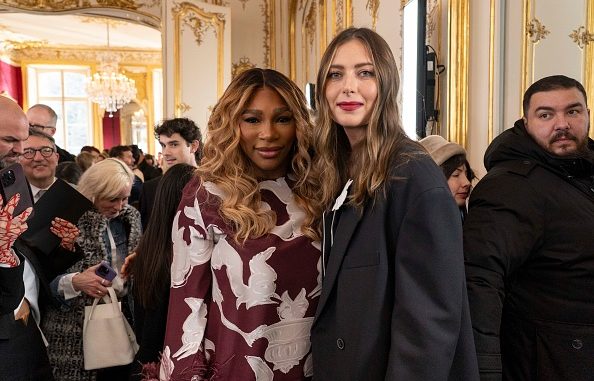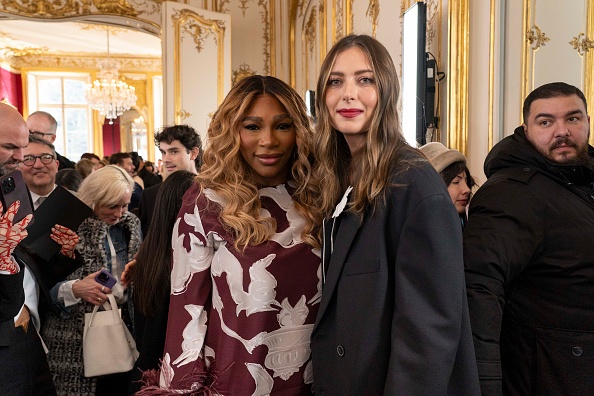
The rivalry between Serena Williams and Maria Sharapova is one of the most well-documented in tennis history. Spanning over a decade and marked by intense matches, public comments, and media speculation, their relationship has been a focal point of discussion in the tennis community.

Recently, Serena Williams indicated that there is no longer any animosity between the two, stating, “Not anymore.” This statement suggests that whatever issues existed between them have been resolved. To understand the evolution of their relationship, it’s essential to delve into its historical context, key moments, and recent developments.
Historical Context and Rivalry
Early Encounters
The rivalry between Serena Williams and Maria Sharapova began in earnest when Sharapova, a rising star, defeated Williams in the 2004 Wimbledon final. This victory was a significant upset, as Williams was already an established champion with multiple Grand Slam titles. Sharapova’s win at Wimbledon was followed by another victory over Williams at the 2004 WTA Tour Championships, which cemented her status as a formidable competitor.
Dominance and One-Sidedness
Despite Sharapova’s early success, the rivalry quickly became one-sided. Serena Williams dominated their head-to-head matches, winning 20 of their 22 encounters. Williams’ powerful game and mental toughness consistently outmatched Sharapova, leading to a long string of victories that included Grand Slam finals and crucial tour matches. This dominance was a source of frustration for Sharapova and added a layer of intensity to their rivalry.
Key Moments and Tensions
Public Statements and Media Narratives
Over the years, both Williams and Sharapova made public comments that fueled speculation about their relationship. Sharapova’s autobiography, “Unstoppable: My Life So Far,” released in 2017, included candid reflections on her rivalry with Williams. She described the intense competitiveness between them and how her victories over Williams early in her career were pivotal moments. Sharapova’s book suggested that Williams had not spoken to her in years and depicted their relationship as distant and professional rather than friendly.
2013 Verbal Spat
One of the most notable public exchanges occurred in 2013, ahead of Wimbledon. Williams made comments in a Rolling Stone interview that many interpreted as being about Sharapova, although she did not name her directly. Williams mentioned a player who was dating “a guy with a black heart.” Sharapova, who was dating Grigor Dimitrov at the time, responded by criticizing Williams’ personal life, referencing her relationship with her coach, Patrick Mouratoglou. This exchange highlighted the personal nature of their rivalry and the tensions that existed off the court.
Resolution and Recent Developments
Professional Respect and Personal Growth
In recent years, both Williams and Sharapova have shown signs of moving past their previous animosity. Williams’ statement that there is no longer any “beef” between them indicates a significant shift in their relationship. This change can be attributed to several factors:
- Maturity and Perspective: Both players have matured and gained perspective over the years. Williams, a mother and a businesswoman, and Sharapova, who retired from professional tennis in 2020, have both moved into new phases of their lives and careers. Their shared experiences as elite athletes who faced immense pressure likely contribute to a mutual understanding and respect.
- Acknowledgment of Rivalry’s Impact: Both Williams and Sharapova have acknowledged the importance of their rivalry in their careers. Sharapova has often spoken about how competing against Williams pushed her to improve and strive for excellence. Similarly, Williams has recognized the role Sharapova played in her journey, providing a consistent and high-profile opponent.
- Public Reconciliation: Instances of public reconciliation, such as friendly interactions at events or supportive comments about each other in the media, have helped to dispel the notion of ongoing animosity. These gestures indicate a move towards a more cordial and respectful relationship.
Conclusion
The rivalry between Serena Williams and Maria Sharapova is a testament to the high-stakes world of professional tennis, where intense competition can lead to personal tensions. However, as both athletes have evolved and matured, they have moved beyond past animosities. Williams’ recent comment that there is no longer any “beef” between them reflects this growth and the ability to appreciate each other’s contributions to the sport. Their relationship now stands as an example of how professional respect and personal growth can overcome historical rivalries, leaving a legacy that highlights both their competitive spirits and their capacity for reconciliation.
Leave a Reply